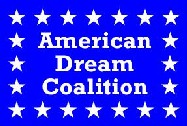
 |
|
Rail vs. Bus TransitLos AngelesThe Los Angeles Metropolitan Transit Authority (MTA) started building rail transit lines in the 1980s. Cost overruns forced the agency to cut back bus service and defer buying new buses. Since the rail lines served many white middle-class neighborhoods and the buses served many minority neighborhoods, the NAACP Legal Defense Fund sued on behalf of a bus riders' union, charging discrimination. A consent decree directed the transit agency to restore bus service and add 150 buses to peak service. To pay for this, the agency cut back on its rail plans. But the bus riders' union charges that the high cost of operating the existing rail lines has left the agency short of the funds needed to restore bus service. In 2000, funding shortfalls led the agency to try to reduce its operating costs by getting wage concessions from its bus drivers. This led to a month-long strike which, said the Los Angeles Times, "is the direct result of the MTA's past decisions to build the nation's most expensive subway system." While only 16 percent of MTA's unlinked trips are on the rail lines, the agency spends half of its funds on the rail lines. As a result, even traditional smart-growth advocate Environmental Defense has charged that the agency is discriminating against the poor. San FranciscoThe Bay Area Rapid Transit (BART) system exists primarily to funnel suburban workers into downtown San Francisco and Oakland. But the high cost of extending BART lines further into the suburbs, where transit usage is low, has limited the funds available to San Francisco Muni and other transit agencies in the inner cities, where transit usage is high. The problems this has created were well covered in an article in the San Francisco Bay Guardian. San JoseSan Jose's light-rail lines are among the worst performing in the nation. Federal transit data report that other light-rail lines carry an average of 27 passengers per car, while San Jose's carries just 15. Whereas other light-rail lines average well over 4,000 passenger miles per route mile, San Jose's carries less than 2,000. Since San Jose's transit agency pays for most of its operating costs out of a local sales tax, the recent recession forced it to make huge cutbacks in bus services and to raise transit fares, which led to a one-third decline in ridership. Yet it continues to spend millions of dollars a year extending light-rail lines into suburbs that make little use of transit services. Similar stories can be told in many other cities that have recklessly built rail lines despite their high cost. Cities that are considering building rail lines should temper their desire to be a "world-class city" with a realistic appraisal of rail's high costs and trivial benefits. Rail Disasters 2005A recent review of transit data reveals that transit ridership declined over the past twenty years in nearly two out of three urban areas with rail transit. Rail Disasters 2005 (opens as PDF) shows that regions with bus-only transit were much more likely to have transit ridership grow as fast or faster than driving than regions with rail transit. |
|